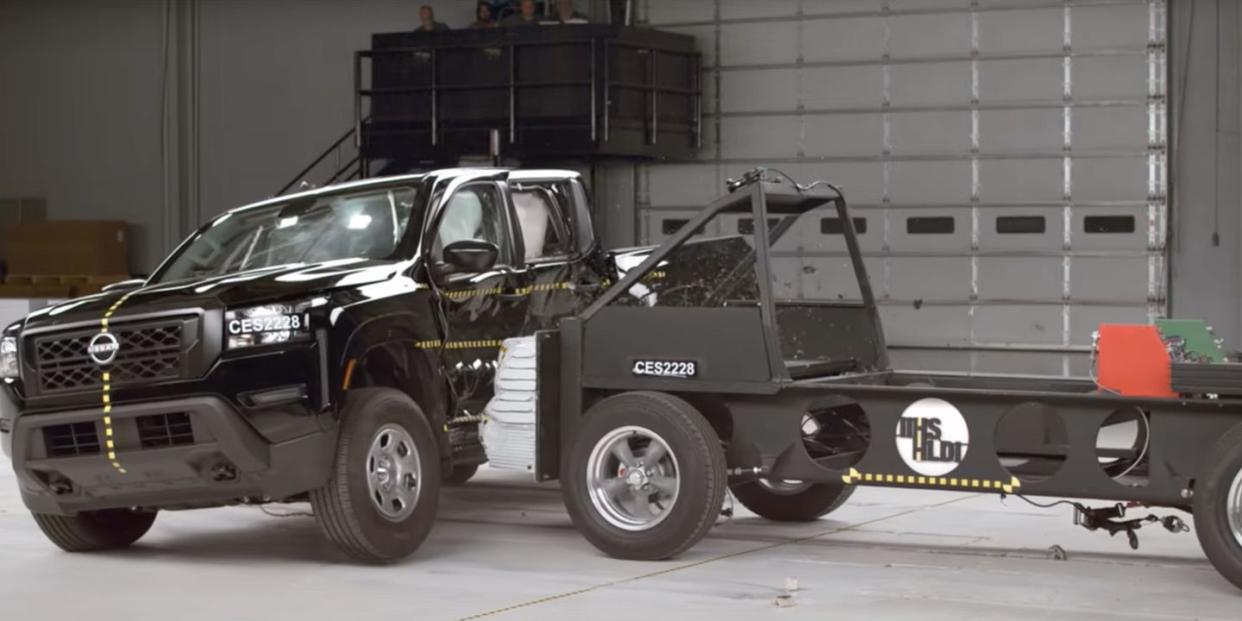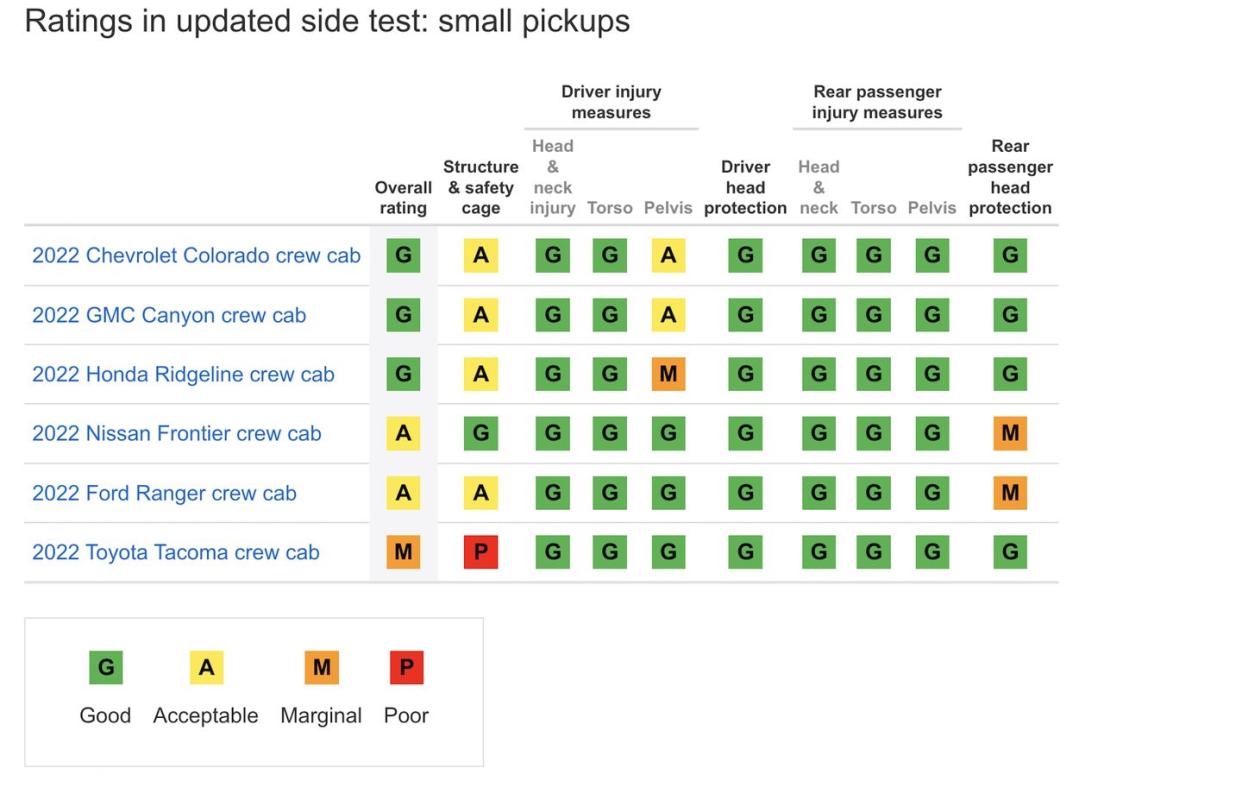Midsize Trucks Perform Well in Side-Impact Testing

Nearly a quarter of all crash-related fatalities that take place on roads in the United States come as a result of side-impact events. The IIHS recently updated its testing procedures for this type of crash in an effort to better reflect the reality of our SUV-laden roadways. The Institute just released its testing results for the current crop of mid-size pickup trucks, with five of six of the nameplates tested securing either a good or acceptable rating. The Toyota Tacoma was the only model not to receive those honors, receiving a marginal rating. Here’s how everything broke down.
The previous iteration of the IIHS side-impact crash test saw a 3300-pound barrier being propelled into a test vehicle at speeds of 31 mph. After realizing that the test was no longer reflective or the forces involved in real-world side-impact crashes, the IIHS reworked the procedure. The test now features a much larger 4200-pound barrier, which aims to better represent the size of the midsize SUVs that dot our roadways. This barrier is also accelerated to 37 mph in the new testing, which combined with the added weight brings a significant increase to the force of the crash.
The Chevrolet Colorado, GMC Canyon and Honda Ridgeline models all received good ratings during the side-impact testing. The structure of these vehicles held up rather well after being rammed by the barrier, though sensor data did show a potential for pelvic fractures in all three of these trucks. The Nissan Frontier and the Ford Ranger scored acceptable ratings, though that isn't the fault of their structure or safety cells. In fact, the Frontier’s safety cell held up the best out of all. Unfortunately, rear occupants in both the Frontier and the Ranger were able to make contact with the C-pillar despite the presence of curtain airbags. As such, both vehicles scored marginal ratings for rear occupant head protection.
The Toyota Tacoma’s structure and safety cell were not as well maintained as its segment competitors. In fact, the impact crumpled the door sill and B-pillar to the point where the B-pillar was shifted merely inches from the center of the driver’s seat. This alone required the IIHS to give the Tacoma a marginal rating, as structural elements are heavily weighted in the Institutes overall rating system. It is worth noting that data did show minimal risk of injury despite the Tacoma’s structural shortcomings.
“Overall, this was a solid performance from these vehicles,” IIHS senior research engineer Becky Mueller said in a statement. “Their high ride height means that the barrier we use to represent a striking vehicle hits the strong door sill structures directly. This likely prevented excessive intrusion into the occupant compartment, except in the case of the Tacoma.”
The IIHS does not currently include this updated side-impact test as part of its annual award criteria. That said, 2023 will see that adjusted, with vehicles requiring a rating of at least good or acceptable to receive an IIHS Top Safety Pick. In order to get the coveted IIHS Top Safety Pick+ award, that rating must fall into the good category. That means that all of these trucks except the Tacoma have a shot at receiving at least some sort of award moving forward.

The Tacoma isn’t the only vehicle to struggle, with the sedan segment looking rather disappointing. The Nissan Altima, Toyota Camry and Chevy Malibu all received poor ratings during their 2022 side-impact testing cycle. Hopefully automakers are willing to address these safety concerns moving forward, especially as they continue to pump out SUVs at unrivaled rates.
You Might Also Like
